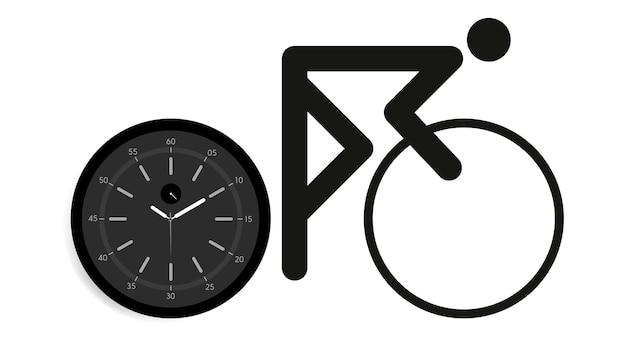Throughout history, humans have been fascinated with the idea of perpetual motion and creating a machine that operates with 100 percent efficiency. Imagine a machine that could keep running indefinitely, without the need for external energy input. Unfortunately, as much as we would like to believe in such a possibility, the laws of physics tell us otherwise.
In this blog post, we will delve into the concept of machine efficiency and explore why it is always less than 100 percent. We will also uncover the factors that limit efficiency and discuss whether there can ever exist a perfect machine. So, join us as we embark on a journey to understand why perpetual motion remains an elusive dream and why all machines are bound to fall short of 100 percent efficiency.
Are you ready to unravel the secrets behind machine efficiency? Let’s dive in!

Why Does a Machine’s Efficiency Never Reach 100 Percent?
Efficiency is like that one friend who always leaves the party before it gets really wild. No matter how hard you try, you just can’t seem to achieve that elusive 100 percent efficiency. But why is that? Let’s dive into the inner workings of machines and unveil the secrets behind their less-than-perfect efficiency.
Heat: The Mischievous Thief
Picture this: You’re excitedly playing with a new toy, and suddenly, it starts getting warm in your hands. No, it’s not your superpower causing it; it’s the toy’s inefficiency at work. You see, every machine has this sneaky little enemy called heat. When machines get to work, they often generate heat energy as a byproduct. This heat energy might not be very useful for the machine’s intended purpose, but it sure knows how to cause a ruckus. It steals away some of the machine’s energy, which unfortunately contributes to the machine’s inefficiency.
Friction: The Unwanted Resistance
Imagine trying to walk through a pool of sticky syrup. Not the greatest feeling, right? Well, machines have a similar nemesis known as friction. When different parts of a machine rub against each other, friction comes into play, making it harder for the machine to function smoothly. It’s like trying to ride a bike with square wheels—a bumpy and inefficient journey. The more friction a machine has to overcome, the more energy it consumes, leaving less available for actually getting things done. Oh, the struggle!
Energy Conversion Shenanigans
Machines are like the ultimate masters of disguise. They possess the magical ability to convert one form of energy into another. But as they perform these marvelous acts of conversion, they often end up losing a bit of energy along the way. It’s like a magician who pulls a rabbit out of a hat but accidentally drops it in the process. Here’s the thing: no energy conversion is ever 100 percent efficient. Some energy is bound to escape in the form of heat or other types of wastefulness. Talk about a disappearing act gone wrong!
Imperfections in Design
Picture a machine as a well-orchestrated dance. Just like a dance routine needs coordination, so does a machine require proper design and engineering. However, no matter how much effort is put into designing a machine, there will always be imperfections. These can range from slight manufacturing errors to the inherent limitations of materials used. Imperfections can create inefficiencies, causing the machine to lose energy or operate less optimally. It’s like trying to dance the salsa with two left feet—it’s not going to be the smoothest routine, no matter how hard you try!
The Law of Thermodynamics
Ah, the famous laws of thermodynamics, ever so eager to spoil the party. These laws govern the behavior of energy in our universe, and unfortunately, they have it in for our machine’s efficiency. The second law of thermodynamics, in particular, states that in every energy transfer or conversion, there is always some energy that is lost or wasted. It’s like having a mischievous sibling who loves to steal your snacks when no one’s looking. No matter how hard you try to maintain a 100 percent efficient machine, the universe just won’t allow it. Thanks, thermodynamics!
In conclusion, machines, with all their complexity and ingenuity, are bound to have a less-than-perfect efficiency. Heat, friction, energy conversion losses, imperfections in design, and the laws of thermodynamics conspire to keep that efficiency below the coveted 100 percent mark. So the next time you encounter a machine that falls short of your efficiency expectations, remember that it’s not necessarily due to a lack of effort or engineering prowess. It’s just the way the cookie crumbles, or rather, the heat dissipates!

FAQ: Why is the efficiency of a machine always less than 100 percent?
In the world of machines and mechanics, one concept that often leaves people scratching their heads is the efficiency of a machine. If you’ve ever wondered why no machine can ever achieve 100 percent efficiency, then you’re in the right place. In this FAQ-style guide, we’ll explore the ins and outs of machine efficiency, from perpetual motion to mechanical limitations. So, grab your thinking cap and get ready to dive into the fascinating world of machine efficiency!
What is the closest thing to perpetual motion
Contrary to popular belief, perpetual motion does not exist. It’s like the elusive unicorn of the mechanical world. However, if we were to identify the closest thing to perpetual motion, it would be a theoretical concept called “zero loss” or “zero point” energy. Although it holds great promise, the practical realization of such a concept remains a challenge. So, while we can dream of perpetual motion, we’re not quite there yet.
Can you build a perpetual motion machine
Ah, the age-old dream of inventors and scientists alike – a machine that keeps going forever without any external input. Unfortunately, the laws of physics have some bad news for us. Building a perpetual motion machine that operates without any energy input is simply impossible. Energy conservation principles dictate that energy cannot be created or destroyed, only converted from one form to another. So, perpetual motion remains a dream and not a reality.
Which machine has the highest efficiency
Now, this is where it gets interesting! When it comes to machines, each one has its own efficiency level. However, it’s worth noting that there is no “perfect” machine with 100 percent efficiency. That being said, in the realm of practical machines, certain systems, such as electric motors, are known for their high efficiency rates. These motors can convert a significant portion of electrical energy into mechanical energy, making them quite efficient. But remember, even the best machines fall short of achieving 100 percent efficiency.
Why is there no perfect machine as physics claims
Physics can be a real party pooper sometimes, can’t it? The reason why there’s no perfect machine lies in the fundamental principles of thermodynamics, which govern the behavior of energy in our universe. According to the second law of thermodynamics, known as the law of entropy, all closed systems tend to move towards a state of increasing disorder, or entropy. This means that no matter how well-designed a machine may be, it will always experience some energy loss due to friction, heat, or other factors. So, while we can strive for greatness, perfection will forever remain out of reach.
Why are all machines not 100 percent efficient
If only machines could be as efficient as our smartphones when it comes to battery life! The truth is, all machines experience some level of energy loss during their operation. There are several reasons behind this, including friction between moving parts, electrical resistance, air resistance, and heat dissipation. These factors contribute to energy being lost in the form of wasted heat or other forms of non-useful energy. It’s like trying to catch all the drops of rain in a leaky bucket – some energy will inevitably escape.
What is the mechanical efficiency of a pump
Pumps are essential devices that move fluids from one place to another. When it comes to pump efficiency, we measure it using the term “mechanical efficiency.” Simply put, mechanical efficiency represents the ratio of the actual work done by the pump to the amount of work it theoretically should have done. In other words, it’s a measure of how efficiently the pump converts input energy into useful work. Achieving high mechanical efficiency in pumps requires careful design and maintenance to minimize energy losses.
How can you increase the efficiency of a machine
Ah, the million-dollar question! While no machine can achieve 100 percent efficiency, there are certainly ways to improve efficiency levels. One way is through regular maintenance and lubrication, which helps reduce friction and wear between moving parts. Additionally, optimizing the design and reducing unnecessary energy conversions can greatly enhance efficiency. Using high-quality materials, minimizing losses due to heat dissipation, and employing advanced control systems are also effective strategies. So, while perfection is unattainable, continual improvement is certainly within reach.
Is perpetual motion possible
In a word, no. Perpetual motion remains firmly planted in the realm of imagination. As much as we might wish for machines that operate forever without any energy input, the laws of physics simply won’t allow it. The principles of energy conservation and entropy tell us that perpetual motion is an impossibility in our universe. So, while it may be a fun concept to entertain, achieving perpetual motion will forever remain outside the realm of possibility.
Can a perfectly 100% efficient system ever be created
Well, I hate to burst your bubble, but a perfectly 100 percent efficient system is nothing more than a pipe dream. As much as we strive for perfection, the inherent limitations of physics prevent us from ever achieving it. Energy losses due to various factors mentioned earlier will always be present. But fear not! By continually pushing the boundaries of technology and refining our understanding of mechanics, we can still make tremendous strides in improving efficiency levels. So, while perfection may elude us, progress is always within our grasp.
Is there a perfect machine
Oh, how we long for the existence of a perfect machine! Unfortunately, reality tends to dash our hopes on this front. The laws of physics tell us that no machine can ever be perfect. There will always be some level of energy loss or inefficiency. However, this doesn’t mean that machines aren’t incredibly useful and impressive inventions. Even without reaching perfection, machines have transformed the way we live, work, and explore the world around us. So, imperfect as they may be, let’s appreciate the wonders that machines bring to our lives.
